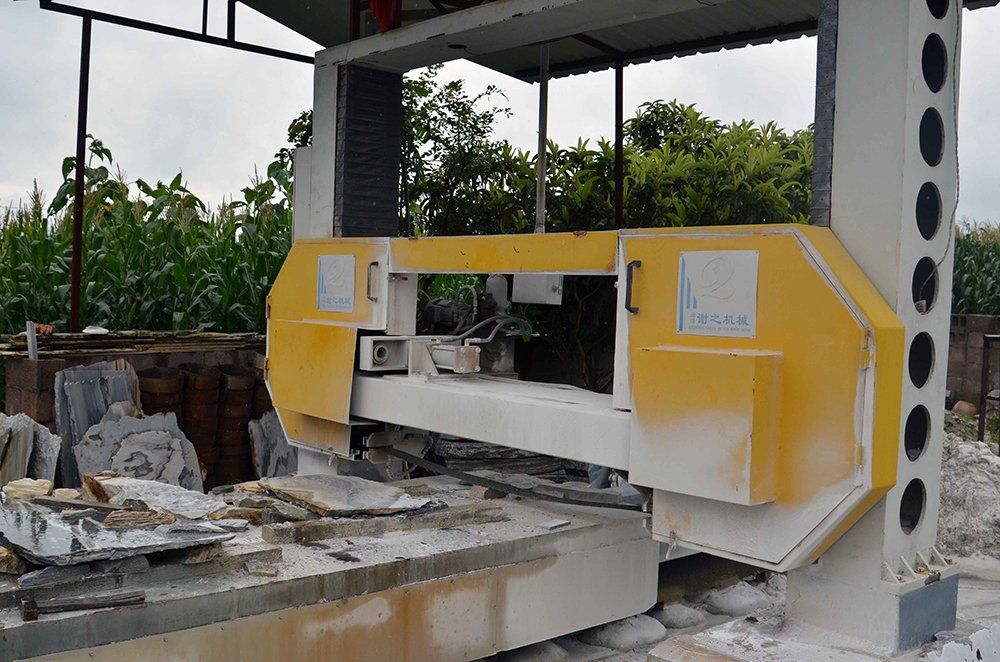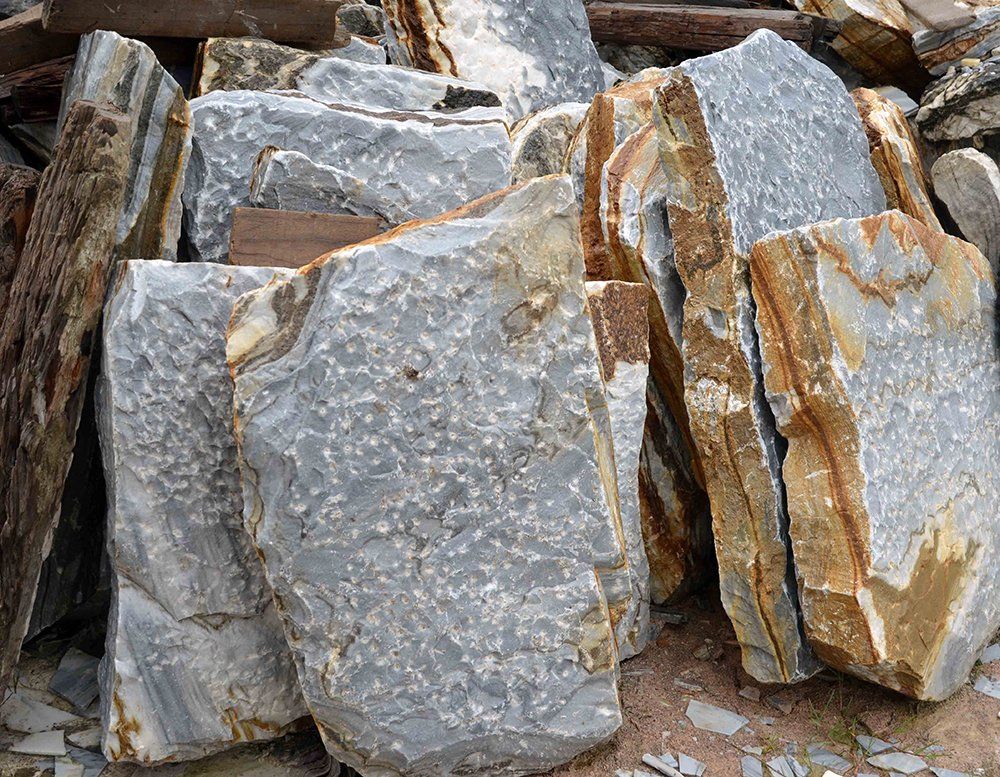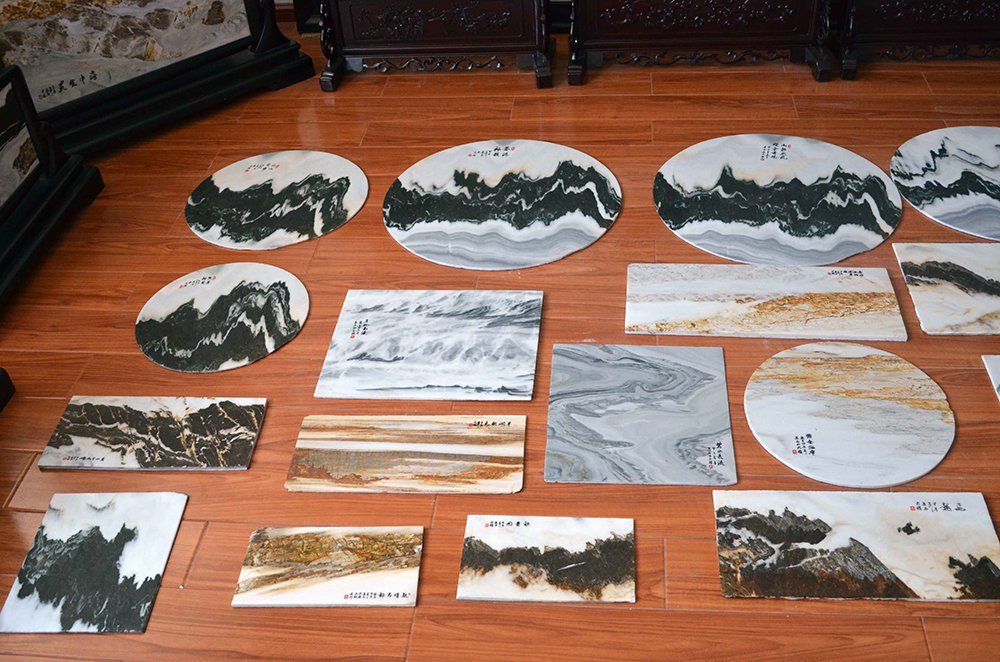Dali Marble from Yunnan China, Part 2How Dali Marble Panels are made and Utilized
By Thomas S. Elias, September, 2014
The first part of this article introduced readers to the subject of Dali marble, its geological history, and how it was part of ancient Chinese culture. In this second part, we will show you how the thinly sliced panels are made and provide information about the general categories of these fascinating marble picture stones.
Large slabs are hauled from approved mining sites in the Changshan to processing plants on the western edge of Dali. Pure, uniform colored marble is cut into pieces that are used in construction, while those streaked with impurities are taken to smaller processing plants were they are cut for the famous painting picture stones. The individual slabs are cut using a vertically mounted, large, diamond-tipped cutting wheel. Each slab stands on its edge while being cut into several thin pieces. Each piece is carefully examined for patterns and color. A single cut piece may yield several nice “picture stones” or in rare cases one large specimen. Smaller power saws are used to further cut a thin slab into smaller pieces to obtain the desired panels.
A large modern, horizontal cutting machine with a band-saw-like flat blade is used to cut thinner sections from a large slab. This appears to be a more precise way of cutting the marble, and one that yields more thin sections. Cutting a single thin slice of marble takes up to 30 minutes depending upon the size of the slab. This work is often done outdoors or in interior courtyards because of the volume of water needed to cool the cutting blade when slicing through a large slab. The smaller finished cut pieces are carefully stacked and displayed for wholesale customers and important private collectors. The serious collectors of Dali marble may visit several cutting facilities each week searching for the rare, highest quality pieces. We were told there are about 40 facilities cutting marble in Dali. Many of the smaller pieces are crated and shipped to furniture manufacturers in cities as far away as Shanghai and Guangzhou. Other pieces with superior patterns and color are sold to retail shops located in Old Dali and to dealer throughout China. Almost all of the production of Dali sliced marble picture stones are for the domestic Chinese market. Only a small amount reaches Western markets due to the fragile nature of the thinly sliced pieces.
The Dali marble picture stones seen in the markets and shops are typically sorted into three broad categories: scenery of mountains and water, figures representing people, and figures representing animals including fish, birds, and mythical creatures. Some of the modern panels appear to have an abstract design. The marble mounted in table-top wood holders or frames for wall hanging are moderate to expensive if purchased from a retail store in Old Town Dali. They are much less expensive if purchased from one of companies that cut the marble. But, then you have to know where to go, and then arrange to have it framed or mounted.
Dali marble picture stones are truly beautiful, each is unique, and they are available in limited quantities. Therefore, they are good collectables and should appreciate in value over time. We love them and have several in our collection.




